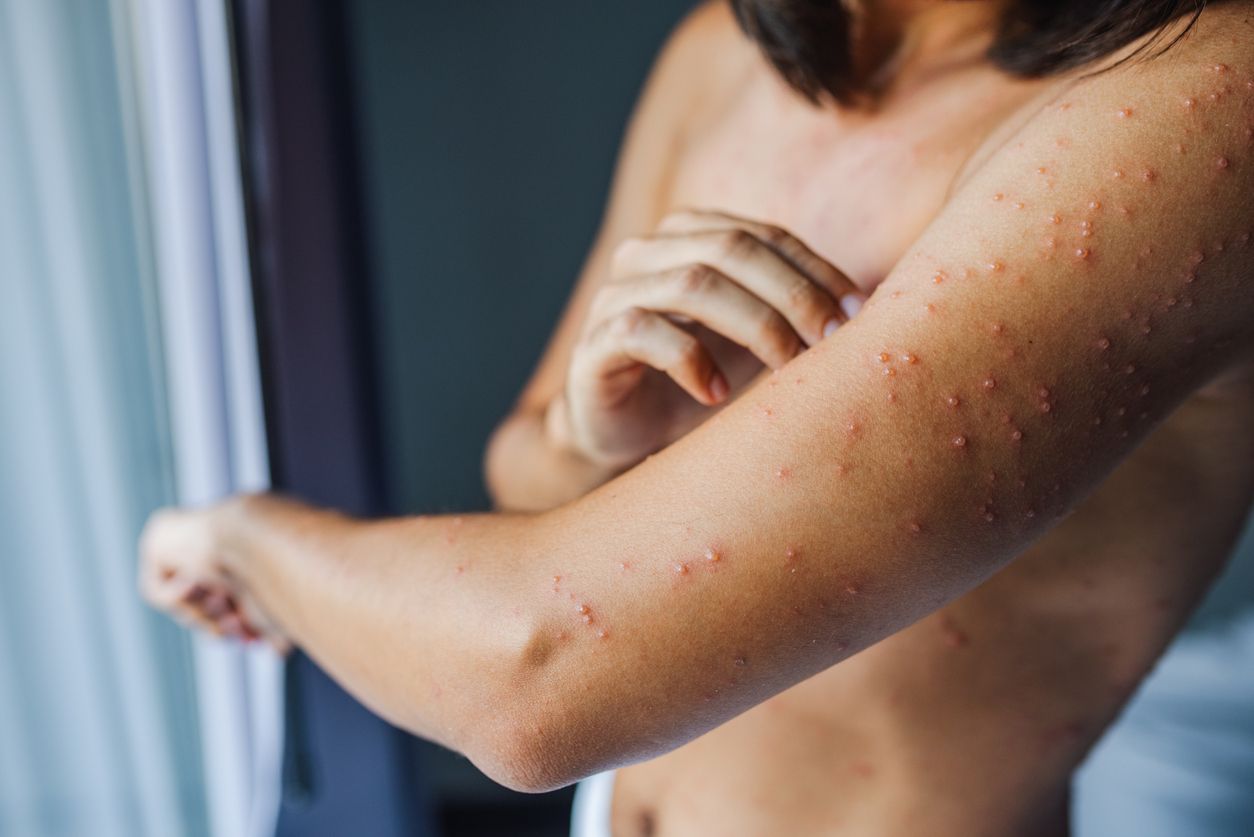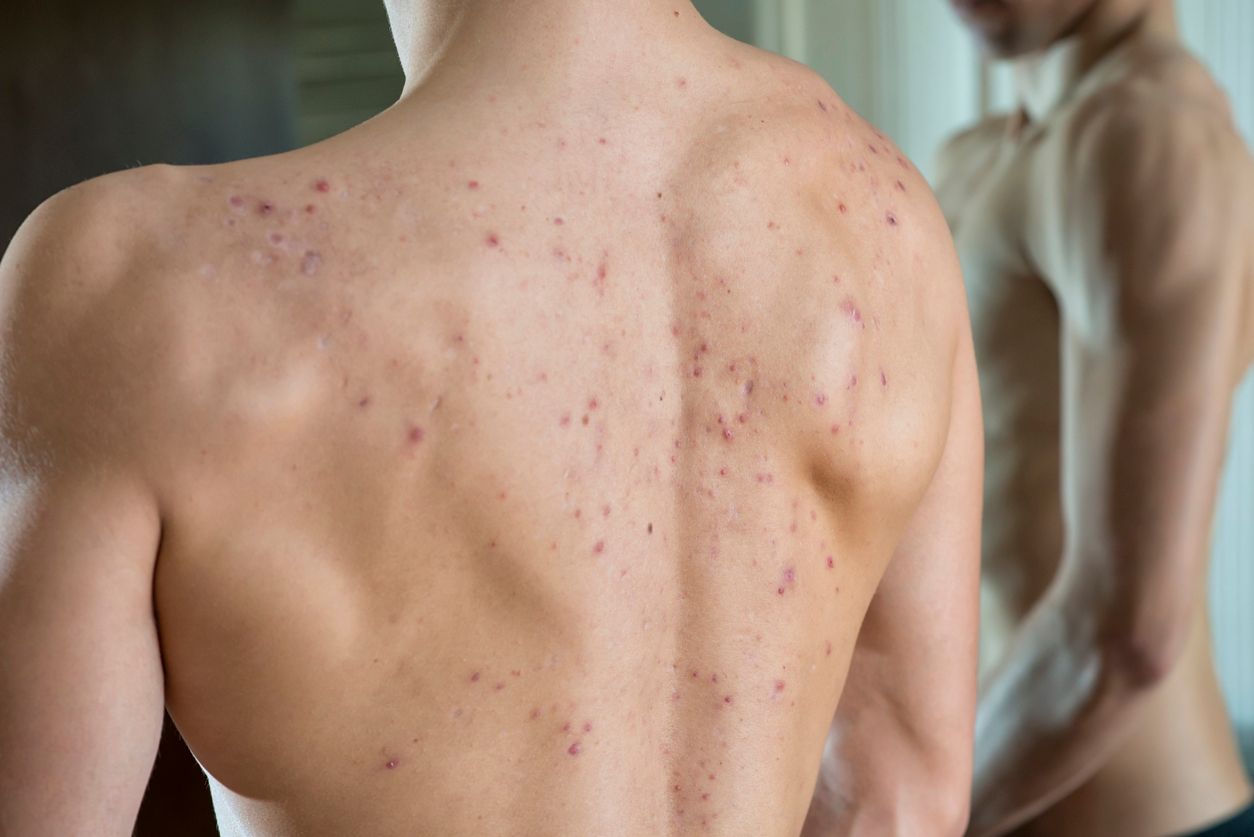- Home
- Trend
- Weight Loss Strategies
- Acne Tips
- Hair Health Information
- Blemish Removal Tips
- Acne Scar Removal Tips
- Muscle Building Techniques
- Intimate Care Tips
- Postpartum Intimate Care
- Eye Bags Wiki
- Tips for Face Slimming
- Secret of Permanent Hair Removal
- Breast Enlargement Tips
- Cure to Snoring
- Marionette Lines
- Skin-Tightening Secrets
Are red spots multiplying on your skin, turning your face into a minefield of blemishes? These red patches could signal underlying health issues—sometimes serious—so they should never be ignored. There are many different types of red skin rashes, and each unusual symptom might be a sign of a deeper problem. Chronic conditions like atopic dermatitis, hemangiomas, or hives are tough to heal quickly. So even if it’s just a tiny, seemingly harmless rash, don’t overlook it!
We’ve compiled 7 types of red skin rashes, matched with their corresponding causes and paired with the most complete range of treatment options. And if you’re not planning to visit a doctor, stay tuned until the end—we’ve got a skin-soothing secret weapon you won’t want to miss!
Decode Your Red Spots: 7 Types of Skin Rashes Explained

1. Allergic Reactions (Skin Allergies)
Common allergens include seafood, nuts, medications, cosmetics, and environmental triggers like pollen, dust mites, and pet dander. Some drug reactions can cause drug-induced rashes, which may appear as red patches, itching, or even blisters—these require immediate medical attention. Allergic dermatitis is characterized by redness, swelling, itching, and rash. Severe cases may involve blisters. Early signs can sometimes resemble more serious conditions like basal cell carcinoma, which may appear as chronic red patches or bumps. If the rash persists, rule out other skin tumors like squamous cell carcinoma.
2. Eczema (Atopic Dermatitis)
Often chronic and recurring, this condition is most common in infants and children. Symptoms include dryness, itching, redness, and flaking, usually on the elbows, knees, and cheeks. Excessive scratching may lead to pigmentation or bruise-like discoloration.
3. Contact Dermatitis
Caused by contact with irritants or allergens—these can be metals, fragrances, or cleaning agents, depending on individual sensitivity. Avoiding the trigger is the best prevention. For recurrent cases, rule out conditions like purpura, which could indicate broken capillaries or immune system reactions.
4. Seborrheic Dermatitis
Typically appears on the scalp, nose sides, and between the eyebrows—areas with active oil glands—and is linked to Malassezia yeast. Anti-fungal shampoos and creams can help manage it effectively.
5. Keratosis Pilaris (“Chicken Skin”)
Caused by keratin buildup around hair follicles. Regular exfoliation and use of products with AHAs or salicylic acid can help. Long-term irritation may lead to pigmentation, so proper skincare is essential.
6. Hives (Urticaria)
• Acute hives: Appear suddenly and disappear within hours to days.
• Chronic hives: Last longer than 6 weeks and are often allergy-related. Triggers include food, medications, insect bites, or stress. Avoid allergens and use antihistamines if needed.
7. Insect Bites
Bites from mosquitoes, fleas, or bedbugs can cause redness and itching, sometimes even blisters. Cold compresses and anti-itch creams help relieve symptoms. If a bite site develops abnormal red nodules or doesn’t heal, it may be a vascular growth like a cherry angioma.
The 5 Key Causes Behind Red Skin Rashes: Often External Triggers or Internal Imbalances

1. Environmental Factors
• Weather extremes: Hot or cold climates can irritate the skin.
• Sun exposure: Prolonged sun can cause red patches or sunburn.
• Pollution / allergens like pollen and dust mites: Can trigger sensitivity and red spots.
• Humidity changes: Both dryness and excess moisture can disrupt the skin barrier.
2. Irritants and Allergens
• Chemicals: Such as detergents, perfumes, and dyes.
• Unsuitable cosmetics or skincare products: May cause redness or itching.
• Nickel, latex, and other materials: Can cause allergic reactions upon contact.
• Insect bites: Cause localized swelling and itching, and may result in bumps or blisters.
3. Food or Drug Reactions
• Certain foods: Like seafood, nuts, or spicy dishes can provoke skin reactions.
• Medications: Some people react to drug ingredients, leading to rashes, itching, or other allergic symptoms.
4. Internal Health Issues
• Immune dysfunction: May cause the body to attack itself, resulting in autoimmune-related rashes.
• Hormonal changes: Stress, fatigue, or hormonal fluctuations can disrupt oil balance and trigger breakouts or rashes.
• Liver or circulation problems: Red spots that are painless but spreading may reflect deeper metabolic or vascular concerns.
• Infections:
- Viral: Conditions like chickenpox, measles, and shingles cause red rashes. These should be distinguished from tumors like cherry angiomas, which are bright red due to abnormal blood vessel growth.
- Bacterial: Folliculitis causes red, inflamed bumps.
- Fungal: Athlete’s foot or jock itch presents with itching and flaking.
5. Mental & Lifestyle Factors
• Chronic stress or emotional swings: Can lower immunity, making skin more reactive.
• Irregular sleep: Late nights and fatigue impair skin healing.
• Over-cleansing or improper skincare: Can damage the skin barrier, increasing sensitivity.
免費體驗
Acne Treatment
1 Minute Self-Registration
Date should not be before minimal date
Not Sure What Kind of Red Spot You Have? Use This Quick Reference Chart!
| Feature | Likely Cause |
|---|---|
| Redness, itching | Allergies, eczema, hives, insect bites |
| Small red bumps | Folliculitis |
| Red patches with flaking | Fungal infections, seborrheic dermatitis |
| Grainy texture | Keratosis pilaris |
| Blisters | Chickenpox, shingles, severe contact dermatitis |
| Widespread rash | Drug allergies, viral infections |
Note: These are only general guidelines. For persistent or worsening symptoms, consult a dermatologist for a professional diagnosis.
Emergency Care for Red Spots: 3 Easy At-Home Treatments & Common Medications
1. At-Home Care
• Gentle cleansing: Use fragrance-free, alcohol-free, low-irritation products.
• Moisturize: Apply creams suited for sensitive skin to lock in hydration.
• Cold compresses: Help reduce swelling and itching.
• Avoid scratching: Prevents further inflammation or infection.
2. Over-the-Counter Treatments
• Anti-itch creams: Calamine or zinc oxide-based creams relieve discomfort.
• Antihistamine creams: Target allergy-related red spots.
3. Know When to Seek Medical Help
• Red spots spreading or symptoms worsening.
• Accompanied by fever, difficulty breathing, or other serious symptoms.
• No improvement with self-care.
Prevention is Better than Cure: 7 Daily Habits to Avoid Skin Rashes
1. Identify and avoid personal allergens.
2. Choose mild, non-irritating skincare products.
3. Keep skin clean and moisturized.
4. Eat a balanced diet and avoid trigger foods.
5. Maintain regular sleep and a positive mood.
6. Wear sunscreen to prevent UV irritation.
7. Choose breathable, loose-fitting clothing.
免費體驗
Acne Treatment
1 Minute Self-Registration
Date should not be before minimal date
Skin Rash Just Won’t Go Away? Here’s the Perfect Medical Solution for Sensitive Skin: Perfect Medical Acne Treatment!
Are stubborn red spots or severe skin flare-ups troubling you? Look no further—Perfect Medical’s Acne Treatment is here to rescue your skin! Whether you're dealing with rashes, acne, scars, blackheads, enlarged pores, or dullness, just one session can dramatically restore skin health and rebalance oil and moisture levels—leaving you with smooth, radiant skin.
This cutting-edge treatment uses a dual-directional vacuum exfoliation system combined with deep-cleansing vortex suction to gently remove dead skin cells and impurities. Once clean, active ingredients are infused deep into the skin to stimulate collagen production, rehydrate, control sebum, and prevent recurrence of red rashes or similar issues.
Book now and enjoy:
• Professional skin analysis
• One session of the Perfect Medical Acne Treatment
免費體驗
Acne Treatment
1 Minute Self-Registration
Date should not be before minimal date
FAQ

What is a drug-induced rash?
A drug-induced rash is an allergic reaction triggered by your immune system in response to certain medications.
Are red moles the same as spider angiomas?
Not always! Spider angiomas often appear as red dots with radiating capillaries—like spider legs.
What does it mean if a rash itches, burns, or swells?
This is usually hives. Try to identify whether it’s acute or chronic. If unsure, consult a doctor.
Is a hemangioma the same as vasculitis?
No. Hemangiomas are benign tumors, usually harmless. Vasculitis affects blood vessel function and can significantly impact metabolism and circulation.
What is eczema?
Eczema is a chronic skin condition that causes redness, itching, and cracking.









